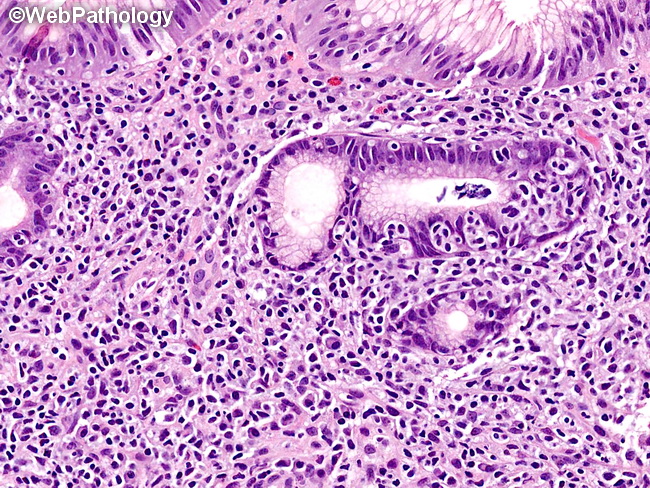Gastric MALT Lymphoma - Treatment & Prognosis


Comments:
Gastric MALT Lymphoma - Treatment & Prognosis: H pylori is detectable in gastric mucosa in the vast majority of gastric MALT lymphomas (75-90% of cases). Eradication of H. pylori with antibiotic therapy is the first line of treatment and induces remission in about 80% of cases. Lymphomas regress over a period ranging from 6 months to 2 years. Repeat endoscopy with gastric biopsy is necessary to evaluate the response to treatment. The presence of t(11;18)(q21;q21) translocation in a subset of gastric MALT lymphomas confers resistance to H. pylori eradication therapy and such cases often arise in the absence of H. pylori infection. H. pylori status is used to stratify patients into prognostic groups to direct therapy. Most gastric MALT lymphomas are stage I at the time of diagnosis. Less than 20% involve the regional lymph nodes and only about 10% have spread to the bone marrow at presentation. Involvement of salivary glands, small intestines, and lungs (all common sites for MALT lymphomas) is sometimes seen. The long-term prognosis is excellent. This image is a higher magnification view of a lymphoepithelial lesion. Several lymphocytes are seen invading the gland. Note the plasmacytic component in the infiltrate.



